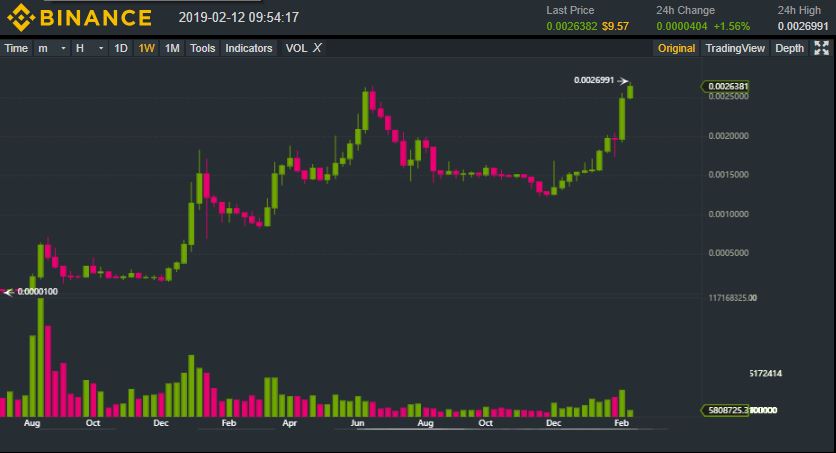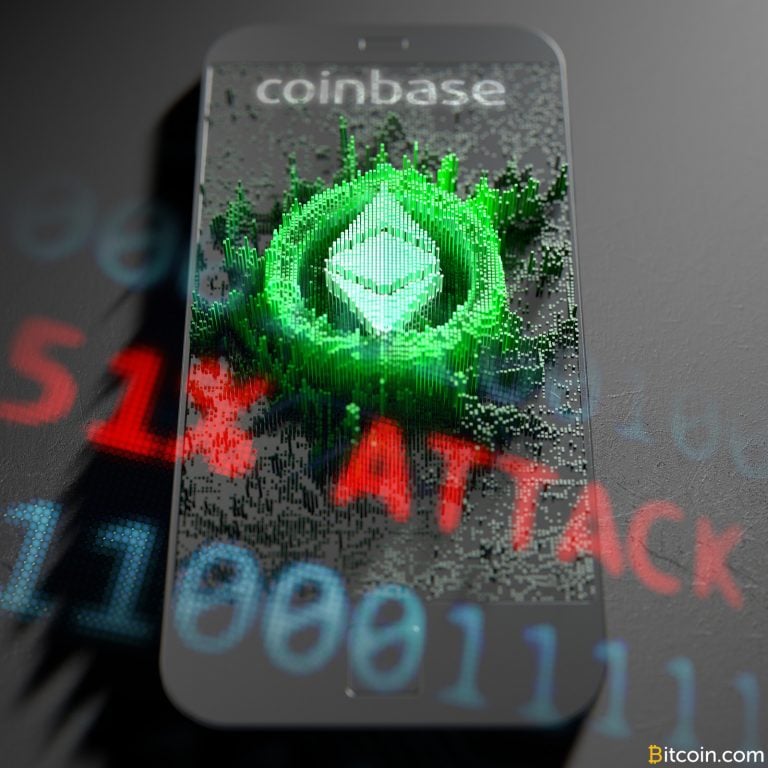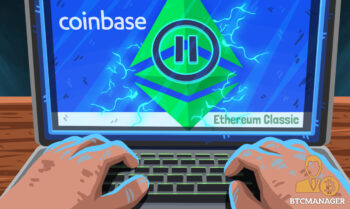2019-3-12 13:45 |
After the peaks and highs brought by the ICO craze/Bitcoin mooning during 2017, Ethereum has been going through a transitional year in 2018. While the faltering market has surely been one reason for Ethereum’s stagnation, the technological aspect played perhaps an even more important role in that. The CryptoKitties fiasco and other times when the network became clogged up exposed a critical flaw in Ethereum’s current backbone: its lack of scalability.
As such, Ethereum has decided to dedicate this year to finding solutions for this flaw. Ethereum Foundation announced they will be awarding grants to developers working on Ethereum network transaction processing capabilities. Even Vitalik himself said that the roadmap for 2018 includes scaling as project’s primary focus. Ethereum 2.0, more scalable and commercially capable version of what we have today, is expected to bring all of these improvements and more.
One scaling solution suggests that Ethereum 2.0 should operate on a basis of three different, yet intertwined chains:
Original Ethereum Proof-of-Work chain Sharding chains Beacon Chain PoW ChainThe PoW chain that Ethereum is currently using is based on the KECCAK-256 algorithm which can be mined. This chain is immutable and decentralized, however the issue with it is that it lacks scalability.
Current capacity of the Ethereum network sits at some 25 transactions per second, which is miniscule when compared to transaction processing capabilities of an average centralized bank.
This also causes situations where transactors are required to use higher transaction fees which will “motivate” the miners to pick them up in front of other transactions on the network. Current PoW chain is also extremely energy wasteful and this is something that is expected to be solved by introducing a PoS layer.
Sharding chainsSharding chains are a solution originally introduced by Vitalik earlier this year; they enable increased scalability with the help of sharding technology.
Sharding technology basically works by splitting the network into smaller pieces (shards); each chain (shard) in a sharding network is made out of nodes which are responsible for picking up and verifying a part of the network transactions. By delegating the transaction verification to multiple shards, we reduce the number of transactions that each node has to verify and increase the network scalability.
That being said, actual sharding chains are some way off from being developed. At the moment, the developers are making their way towards Ethereum 2.0 (in some places called Casper v2) by placing their primary focus at the upcoming PoS chain which carries the working title Beacon Chain.
About Beacon ChainBeacon chain got its name from the idea of “random beacon” – an element of a system that provides randomness to the rest of the system. Beacon chain is expected to act as the spine of Ethereum 2.0, branching out left and right and coordinating/connecting sharding chains on and to the Ethereum Network. Beacon chain links up with every shard in the network through a connection that is signed off on by a pseudo-randomly selected group of validators.
You can see the entire structure on the diagram above (originally taken from this link). As pointed out already, the PoW chain is active and functional, in charge of maintaining the Ethereum network in its current state. It will also stay operational when Ethereum 2.0 goes live.
Sharding chains will serve as the data layer, verifying and aggregating transaction and allowing Ethereum to become a scalable network. Ethereum’s Virtual Machine will act as the “execution layer” as every Ethereum 2.0 dApp will run on top of it.
What does it do?As we already implied, beacon chain will be the next element introduced into the Ethereum architecture, acting as the base layer of the 2.0 solution. It will have several important roles:
overseeing the execution of the PoS protocol chain-wide (both on the Ethereum and shard level) organizing validators into committees to vote on the proposed blocks choosing block proposers (similar to what Cardano has, Ethereum 2.0 blocks are produced in 16 second time slots and later collected and published by a chosen block proposer; once shard chains go live, each chain will have its own proposer) providing randomness (a key requirement of the proof-of-stake protocol is a source of randomness that is distributed, verifiable, unpredictable, and unbiased; when Ethereum 2.0 sharding reaches its full potential, we’ll see every shard with its own randomly chosen proposer gathering transaction information for it) approving/managing shards/validators (initial implementation of Ethereum 2.0 will have shards only aggregating transactions/coming to a consensus regarding transaction ordering) applying the consensus rules applying rewards and penalties to validators processing crosslinks tying each shard to the spine that is beacon chainEach node on the network maintains its own local beacon chain. A node stakes a required sum of 32 ETH to become a part of the network that will run the PoS beacon chain.
The ETH is locked in a smart contract on the existing PoW blockchain; the node is then allowed access to the chain and is free to start validating blocks on it. The deposit of 32 ETH serves as a mechanism against breaking the network rules, as any validator who breaks these rules is kicked off the beacon chain and will have a part of his funds taken from him.
In the event that a validator’s deposit falls below 16 ETH, the beacon chain will automatically eject him from the validator set.
Compare these nodes and the chain to a military squad, where one squad (chain) can have multiple smaller individual fire teams (nodes) which are all decentralized but are working together towards the squad goal.
The project has been explained in much more detail here and you should check that out as well to learn more about the beacon chains. This presentation by Hsiao-Wei Wang is also a good source of information about Ethereum 2.0 and sharding solutions for it.
Timelines?Recently the Ethereum team spoke on the date of the beacon chain being released. A representative from Sigma Prime, which is working on an Ethereum 2.0 client called Lighthouse, said the timeline should see the beacon chain launched sometime around March/April.
This representative added that he thinks the market will be able to see clients talking to each other, pushing blocks around, having some interoperability at this date. A member of Status, another team working on different Ethereum 2.0 client, agreed and said that March could be the date their own software hits the beacon chain.
The same person added that the sharding timeline will be much longer but that by mid-2019 we should expect to see beacon chain up and running.
Buterin himself addressed the issue during this year’s Ethereum hackathon in Prague, confirming the project will be rolled out in stages. Claiming that fundamentals have been figured out, Vitalik suggested that around 60% of work has been completed on the chain.
Once it’s 100 percent ready they’ll launch the beacon chain, he said, then data only sharded chains, then execution and finally the cross chain communication.
Several beacon chain clients are currently being developed separately from the familiar suite of standard Ethereum clients (Geth, Parity, Pantheon, et al.) by a number of teams. For example, Prysmatic and Lighthouse have periodically updated the public on their own clients, and several teams have offered bounties and rewards for helping them develop their own clients.
Overall, it is expected that the beacon chain layer will be implemented during 2019, the shard chain (data layer) in 2020, and the execution layer in 2021. Which means that true Ethereum scalability is still several years away from happening.
ConclusionBeacon chain is has been in development for some time now and it seems that all the effort wasn’t in vain. With a structure which might seem centralized at first, beacon chain should offer a scaling solution that won’t endanger networks centralization or its immutability. The chain will be the basis for the upcoming PoS Ethereum and will be accessible to anyone who owns 32 ETH or more. The importance of the beacon chain and what comes after it has perhaps been explained the best by Vitalik himself:
“Ethereum 1.0 is a couple of peoples’ scrappy attempt to build the world computer; Ethereum 2.0 will actually be the world computer.”
The post What is Ethereum Beacon Chain? appeared first on CaptainAltcoin.
origin »Ethereum (ETH) на Currencies.ru
|
|










